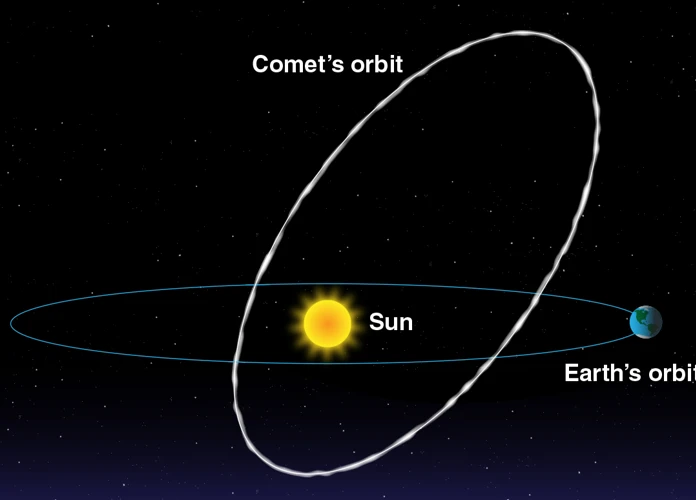If you’ve ever gazed up at the night sky and marveled at the breathtaking display of shooting stars, you might have wondered about the connection between these celestial phenomena and comets. Meteor showers, those captivating displays of falling meteors, are intrinsically linked to comets, the “dirty snowballs” that originate from the outer reaches of our solar system. In this article, we will delve into the fascinating relationship between meteor showers and comets, exploring their origins, formations, and famous associations. So, prepare to embark on a journey through the vast expanse of space as we unravel the mysteries of these cosmic wonders.
What are Meteor Showers?
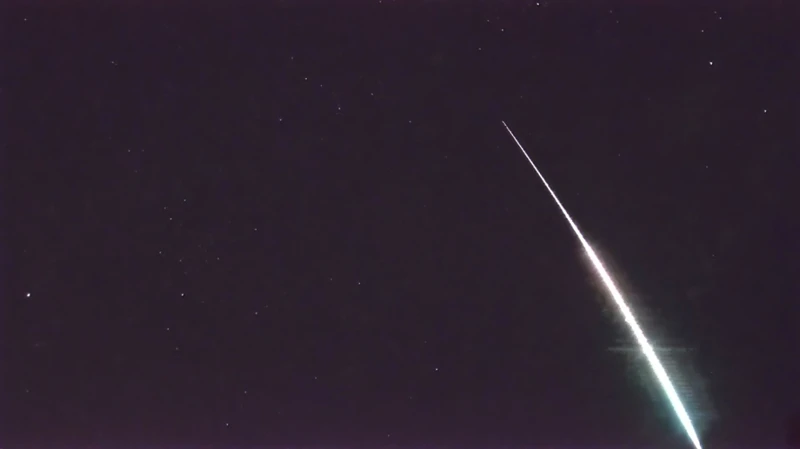
Meteor showers are awe-inspiring celestial events that occur when the Earth passes through a trail of debris left behind by a comet or asteroid. These debris trails consist of tiny rocks, dust particles, and ice fragments that are released as the comet or asteroid travels through space. As our planet moves through these debris trails, the particles enter Earth’s atmosphere at high speeds, creating friction and heating up, resulting in the spectacular display of shooting stars that we observe during a meteor shower. The trails are named after the constellation from which they appear to originate, known as the radiant point. Each meteor shower is associated with a specific comet or asteroid, and their appearances are predictably recurring, making them a thrilling event for skywatchers and astronomers alike. To learn more about meteor showers and how to capture their beauty through photography, check out our guide on meteor shower photography. Additionally, if you’re interested in delving deeper into the science behind these celestial events, take a look at our article on the science behind meteor showers. Finally, meteor showers hold cultural significance in various societies around the world, and you can explore their cultural and historical contexts in our piece on meteor shower cultural significance.
What are Comets?
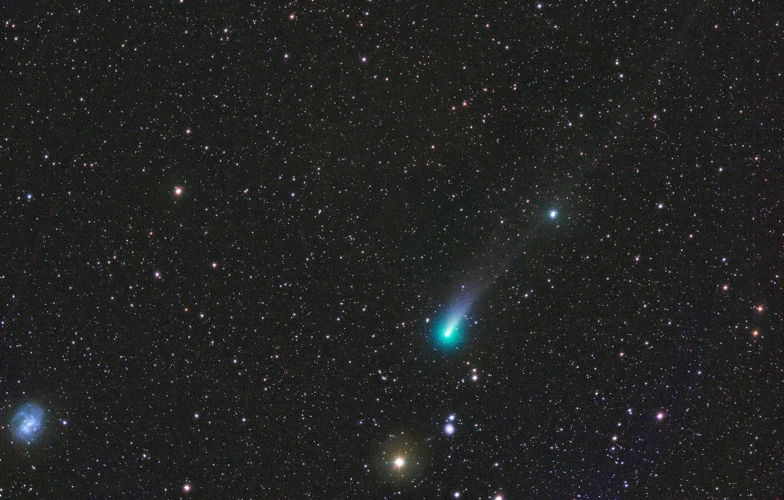
Comets are fascinating celestial objects that originate from the outer regions of our solar system. They are often referred to as “dirty snowballs” due to their composition of ice, rock, dust, and other organic compounds. Comets are composed of a nucleus, which is the solid core of the comet, surrounded by a coma, a hazy and glowing atmosphere, as well as a tail that is formed when the comet approaches the Sun. The nucleus is typically a few kilometers in diameter and is made up of a mixture of water ice, frozen gases, and rocky materials. As a comet gets closer to the Sun, the heat causes the solid core to vaporize, creating the glowing coma and the characteristic tail, which can stretch for millions of kilometers. The tail always points away from the Sun due to the solar wind, a stream of charged particles emitted by the Sun. Comets have highly elliptical orbits, which means that they spend most of their time in the outer regions of our solar system, but periodically venture closer to the Sun, resulting in their stunning displays during these close encounters. These celestial wanderers have captivated humans for centuries with their beauty and unpredictability, and they play a crucial role in the formation and evolution of our solar system.
The Relationship Between Meteor Showers and Comets
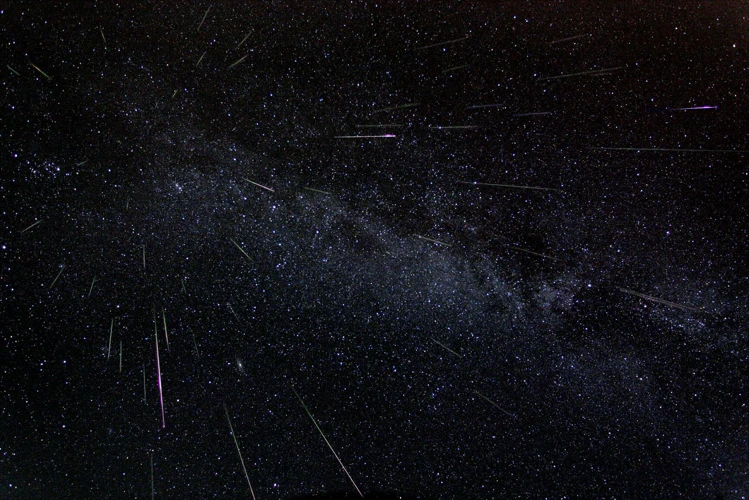
The relationship between meteor showers and comets is a captivating tale of cosmic interaction. Comets, often referred to as “dirty snowballs,” originate from the outer regions of our solar system. As they journey closer to the Sun, the intense heat causes the icy nucleus of the comet to vaporize, releasing gas and dust into space. This process creates a glowing coma and a tail that can extend for millions of kilometers. When Earth intersects the orbit of a comet, it passes through the trail of debris left behind by the comet. These trails consist of various particles, including dust and ice, which become the shooting stars we see during a meteor shower. The origins of meteor showers can be traced back to the specific comets or asteroids whose debris trails intersect with our planet’s orbit. The most famous example is the Perseid meteor shower, which is associated with the comet Swift-Tuttle. The close relationship between meteor showers and comets provides us with a mesmerizing spectacle and offers valuable insights into the composition and behavior of these celestial wanderers.
1. Origins of Meteor Showers
The origins of meteor showers can be traced back to comets and asteroids. When these icy bodies venture close to the Sun, the intense heat causes them to release gas and dust particles, creating a tail that extends behind them as they travel through space. Over time, as the comet or asteroid loops around the Sun in its orbit, it leaves behind a trail of debris in its path. When the Earth intersects with one of these debris trails, the particles enter our planet’s atmosphere and burn up, creating the mesmerizing streaks of light that we witness during a meteor shower. This process occurs because the Earth’s gravity pulls the debris towards it, making the particles collide with our atmosphere at high speeds, effectively vaporizing them and producing the radiant displays we observe from the ground. It is important to note that not all comets and asteroids produce meteor showers. Only those whose orbits intersect with Earth’s orbit and have enough debris in their trail can result in significant meteor activity. As we delve deeper into the relationship between meteor showers and comets, we will explore specific examples and their origins in more detail. Stay tuned!
2. Comet Debris Trails
Comet debris trails play a crucial role in the formation of meteor showers. These trails are formed when comets, those icy bodies from the outer regions of our solar system, come closer to the Sun. As comets approach the Sun and experience its intense heat, their icy surfaces begin to vaporize, releasing gas and dust into space. This process creates a characteristic “coma” around the comet, a glowing cloud of gas and dust. Some larger fragments may break away from the comet’s nucleus, forming a trail of debris that follows the comet’s orbital path. These debris trails can be extensive, stretching millions of kilometers behind the comet.
When the Earth crosses the orbital path of a comet, it passes through these debris trails. As our planet moves through the trails, it encounters the particles left behind by the comet. When these particles enter the Earth’s atmosphere, they collide with air molecules and produce intense heat due to friction. This heating causes the particles to burn up and disintegrate, resulting in the streaks of light we observe as meteors during a meteor shower.
The size, density, and composition of the debris trails determine the intensity and frequency of meteor showers. Some trails are denser, leading to more meteor activity during a specific meteor shower. Additionally, the Earth’s encounters with comet debris trails can vary from year to year, as the position of the comet and its debris trails change over time. Scientists closely study the orbits and compositions of comets to predict the occurrence and characteristics of meteor showers, allowing enthusiasts and researchers to prepare and observe these captivating celestial displays.
3. Perseid and Swift-Tuttle Connection
The Perseid meteor shower is one of the most popular and eagerly anticipated annual meteor showers, known for its vibrant display of shooting stars. This meteor shower is closely connected to the comet Swift-Tuttle. Swift-Tuttle, a massive comet with a nucleus approximately 26 kilometers in diameter, takes about 133 years to orbit the Sun. The last time it swung through our solar system was in 1992. As the comet travels on its orbit, it releases debris consisting of dust and small rocky particles. When the Earth passes through this debris trail, typically between mid-July and late August, we experience the Perseid meteor shower. The name “Perseid” comes from the fact that the meteors seem to radiate from the constellation Perseus in the night sky. This radiant point is not the actual location of the debris, but an optical effect caused by the Earth’s motion through the trail. The Perseid meteor shower puts on a spectacular show every year, with some meteors leaving bright and glowing trails that can be visible for several seconds. It is a favorite among stargazers and photographers alike, drawing crowds of outdoor enthusiasts who gather to witness this celestial extravaganza firsthand.
The Formation of Meteor Showers
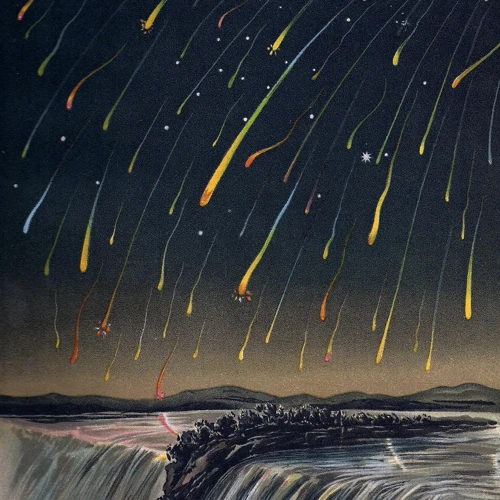
The formation of meteor showers is a fascinating process that involves the interaction between comets and our planet. When a comet approaches the Sun, it heats up, causing the release of gases and the disintegration of its nucleus. This releases a stream of dust and debris into space, creating what is known as a meteoroid stream. As the Earth orbits the Sun, it sometimes intersects these streams of debris, leading to meteor showers. When the tiny particles from the stream collide with Earth’s atmosphere, they burn up due to the intense friction caused by the high-speed entry. This combustion process produces the streaks of light that we see as shooting stars during meteor showers. The radiant point, the apparent origin of the meteor shower, is determined by the direction from which the Earth intersects the meteoroid stream. So, the next time you witness a meteor shower, remember that its formation is a result of the intricate dance between our planet and the remnants of comets from the depths of space.
1. Dust and Debris from Comets
Dust and debris from comets play a crucial role in the formation of meteor showers. Comets are composed of a mixture of rock, dust, ice, and organic compounds, forming what scientists often refer to as “dirty snowballs.” As comets orbit the Sun, the heat causes their icy surfaces to vaporize and release gas, producing a glowing coma and, in some cases, an elongated tail. Along with these gases, comets also shed small particles, ranging from fine dust grains to larger rocky fragments, which become scattered along their orbital paths.
When the Earth crosses the path of a comet’s orbit, it encounters these particles, which are relatively small compared to the Earth’s size but still substantial in quantity. As our planet moves through this cloud of comet debris, the particles enter the Earth’s atmosphere at high speeds, typically ranging from 40,000 to 260,000 kilometers per hour (25,000 to 160,000 miles per hour). The friction generated by the particles interacting with the atmosphere heats them up to temperatures of several thousand degrees Celsius, causing them to burn up and create the brilliant streaks of light known as meteors or shooting stars.
The majority of these meteoroids are incredibly tiny, with sizes ranging from sand grains to pebbles. They burn up entirely in the atmosphere, leaving no trace behind. However, larger fragments can survive the intense heat and make it to the Earth’s surface, becoming meteorites. These remnants provide valuable insights into the composition and nature of comets and other celestial bodies.
It’s important to note that while comets are the primary source of meteoroids in our solar system, asteroids also contribute to the debris that creates meteor showers. The dust and debris shed by asteroids can also intersect Earth’s orbit, resulting in their own distinct meteor showers.
2. Radiant Point and Meteor Streams
The radiant point and meteor streams are essential elements in understanding meteor showers. The radiant point refers to the location in the sky from which the meteors appear to originate during a meteor shower. It is usually named after the constellation in which it is situated. For example, the Perseid meteor shower has a radiant point in the constellation Perseus. The meteors’ paths seem to radiate outward from this point, although they can appear anywhere in the sky.
Meteor streams, on the other hand, are the paths of debris left behind by comets or asteroids as they orbit the sun. These streams consist of dust particles, rocks, and ice fragments that have been shed by the celestial bodies over time. When Earth intersects with one of these streams during its orbit around the sun, the particles enter our atmosphere and burn up, creating the mesmerizing display of a meteor shower.
To illustrate this better, imagine driving through a rainstorm. The radiant point would be akin to the direction from which the rain appears to be falling, while the meteor streams would be the specific raindrops falling along the pathway. Similarly, during a meteor shower, the radiant point serves as a marker for us to observe the meteors, while the meteor streams represent the orbital path of the debris left by the comets or asteroids.
Understanding the radiant point and meteor streams enables scientists and skywatchers to predict and study meteor showers, offering a deeper appreciation of the cosmic ballet happening above us.
Famous Meteor Showers Associated with Comets
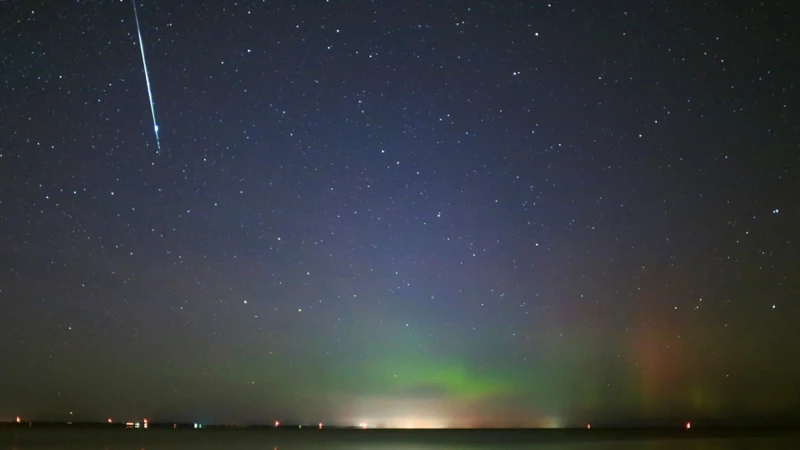
Famous meteor showers that are associated with comets have captivated skywatchers for centuries. One such meteor shower is the Perseids, which is linked to the comet Swift-Tuttle. These annual meteor showers peak in August and are known for their spectacular displays of bright and fast-moving meteors. Another notable meteor shower is the Leonids, which are tied to the comet Tempel-Tuttle. The Leonids are known for their periodic intense meteor storms, with notable displays occurring in the years 1833 and 1966. Additionally, the Geminids meteor shower, associated with the asteroid-like object 3200 Phaethon, is known for producing a high rate of meteors, giving stargazers a dazzling show every December. These meteor showers, along with many others like the Orionids, Taurids, and Quadrantids, are eagerly anticipated each year by enthusiasts and provide a unique opportunity to witness the mesmerizing connection between comets and meteor showers.
1. Perseids
The Perseids meteor shower is one of the most eagerly anticipated celestial events of the year. Named after the constellation Perseus, the radiant point from which they appear to originate, the Perseids are associated with the comet Swift-Tuttle. This particular meteor shower occurs annually from late July to mid-August, peaking around August 11th or 12th. The Perseids are known for their high activity and fast-moving meteors, often leaving glowing trails in their wake. Skywatchers can expect to see dozens of meteors per hour during the peak, creating a mesmerizing show in the night sky. The Perseids is a favorite among stargazers due to its warm summer nights and its reliable and spectacular display. To fully enjoy the Perseids, find a location away from light pollution, lie back, and witness the beauty of these cosmic fireworks. Grab a blanket, a comfortable spot, and prepare to be amazed by the dazzling Perseids meteor shower.
2. Leonids
The Leonids meteor shower is one of the most highly anticipated annual meteor showers, captivating skywatchers with its dazzling display of shooting stars. This meteor shower gets its name from the constellation Leo, as the radiant point from which the meteors appear to originate is located in close proximity to this mighty lion in the sky. The Leonids are associated with the comet Tempel-Tuttle, which orbits the Sun once every 33 years. As Earth passes through the debris trail left by this comet, typically in mid-November, the tiny particles enter our atmosphere and burn up, creating streaks of light across the night sky. The Leonids have a reputation for producing some of the most incredible meteor storms in history, with meteor rates reaching thousands per hour. One of the most notable periods was in 1833 when observers witnessed a breathtaking storm, with reports of tens of thousands of meteors lighting up the sky each hour. Another memorable event occurred in 1966 when the Leonids once again put on a spectacular show, with meteor rates peaking at an astonishing 144,000 per hour. Although the Leonids may not produce such intense storms in recent years, they still offer a remarkable sight worth observing. So mark your calendars for mid-November and prepare to witness the celestial beauty of the Leonids meteor shower.
3. Geminids
The Geminids meteor shower is one of the most highly anticipated and reliable meteor showers of the year. It usually occurs from December 4th to December 17th, with its peak activity around the night of December 13th or 14th. What makes the Geminids unique is that it is not associated with a comet but instead originates from an asteroid known as 3200 Phaethon. This sets it apart from other meteor showers that are typically associated with comets. The Geminids are named after the constellation Gemini, as they appear to radiate from this point in the sky. With an average of 120 meteors per hour during its peak, the Geminids offer a spectacular show for sky enthusiasts. The meteors are known for their bright and colorful display, often leaving long-lasting trails that make them easily recognizable. Another fascinating aspect of the Geminids is their relatively slow speed compared to other meteor showers, with an average velocity of 22 miles per second (35 kilometers per second). This slower speed allows for more prolonged and visible trails, adding to their visual appeal. Due to its occurrence in December, the Geminids can be a bit challenging to observe for some people in the Northern Hemisphere due to colder temperatures and shorter nights. However, dedicated skywatchers who brave the elements are often rewarded with a stunning celestial spectacle. So, mark your calendars and prepare to witness the mesmerizing beauty of the Geminids meteor shower.
Notable Comets and their Meteor Showers
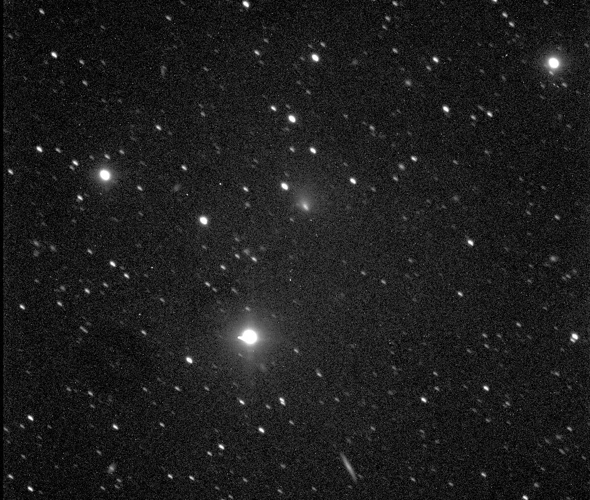
Notable comets have left their mark on the astronomical record, often accompanied by spectacular meteor showers. One such example is Comet Halley, which is associated with the Orionids meteor shower. The Orionids, visible in October, are known for their fast-moving meteors that originate from the direction of the constellation Orion. Another famous comet is Comet Tempel-Tuttle, which produces the Leonids meteor shower. The Leonids are known for their periodic intense displays of shooting stars, with the comet’s debris creating breathtaking meteor storms. Finally, Comet Swift-Tuttle is linked to the Perseids meteor shower, one of the most popular and reliable annual meteor showers. The Perseids occur in August and offer a mesmerizing celestial spectacle, with bright meteors streaking across the sky. These notable comets have generated remarkable meteor showers that continue to captivate enthusiasts and researchers alike.
1. Comet Halley and Orionids
Comet Halley, one of the most famous comets in history and named after the astronomer Edmond Halley, has a close association with the Orionid meteor shower. The Orionids occur every year in late October, and their radiant point is located in the constellation Orion. These meteor showers are a result of the debris left behind by Comet Halley as it orbits the Sun. As the Earth intersects the orbit of Comet Halley, it passes through the trail of dust and debris that the comet has shed over centuries. When these particles enter Earth’s atmosphere, they burn up and produce the beautiful spectacle of the Orionid meteor shower. The Orionids are known for producing fast and bright meteors, and skywatchers can typically expect to see around 20 meteors per hour during the peak of this shower. Despite the fact that Comet Halley visits the inner solar system only once every 76 years, its presence is felt annually through the Orionid meteor shower, captivating viewers with its stunning display of celestial fireworks.
2. Comet Tempel-Tuttle and Leonids
Comet Tempel-Tuttle is the celestial body responsible for the annual Leonid meteor shower. Discovered in 1865 by Ernst Tempel and Horace Parnell Tuttle, this periodic comet takes approximately 33 years to complete one orbit around the Sun. The Leonid meteor shower occurs when Earth passes through the debris trail left behind by Tempel-Tuttle during its journey. The meteor shower gets its name from the constellation Leo, as its radiant point appears to originate from this zodiacal constellation. The Leonids are known for their fast and bright meteors, often leaving stunning trails across the night sky. This meteor shower has a long and rich history, with notable peaks of activity occurring roughly every 33 years, aligning with the return of Comet Tempel-Tuttle. In 1966, the Leonids produced an exceptionally intense display, with rates as high as thousands of meteors per hour, captivating observers around the world. While the Leonid meteor shower might not reach such remarkable levels of activity in recent years, it still remains a popular event for stargazers and astronomy enthusiasts alike, offering a mesmerizing spectacle of shooting stars that originates from the enigmatic Comet Tempel-Tuttle.
3. Comet Swift-Tuttle and Perseids
Comet Swift-Tuttle is a periodic comet with a particularly noteworthy association with the Perseid meteor shower. This comet has an orbital period of about 133 years, with its last appearance in 1992. The Perseid meteor shower is an annual event that takes place between late July and mid-August, peaking around August 11th to 13th. It is one of the most anticipated and reliable meteor showers, known for its abundance of bright meteors.
The Perseids get their name from the constellation Perseus, as they appear to radiate from this point in the sky. This radiant point is actually caused by the Earth intersecting with the debris trail left by Comet Swift-Tuttle on its orbital path. The particles from the comet’s nucleus, ranging in size from grains of sand to small pebbles, burn up as they enter our atmosphere, creating the mesmerizing streaks of light that we observe during the Perseid meteor shower.
The association between Comet Swift-Tuttle and the Perseids is significant because the comet’s nucleus is estimated to be about 16 kilometers in diameter, making it one of the largest known objects to repeatedly pass close to Earth. As it travels through the inner solar system, it leaves behind a substantial amount of debris, creating a dense and active meteor stream associated with the Perseids.
During the peak of the Perseid meteor shower, skywatchers can expect to witness around 60 to 100 meteors per hour under optimal viewing conditions. The Perseids are best observed in darker skies, away from light pollution, and during the predawn hours when the radiant point is high in the sky.
The connection between Comet Swift-Tuttle and the Perseid meteor shower has captivated astronomers and sky enthusiasts for centuries. Observing this celestial spectacle not only allows us to appreciate the beauty of the cosmos but also provides valuable insights into the nature of comets and their relationship with meteor showers.
Scientific Research and Discoveries
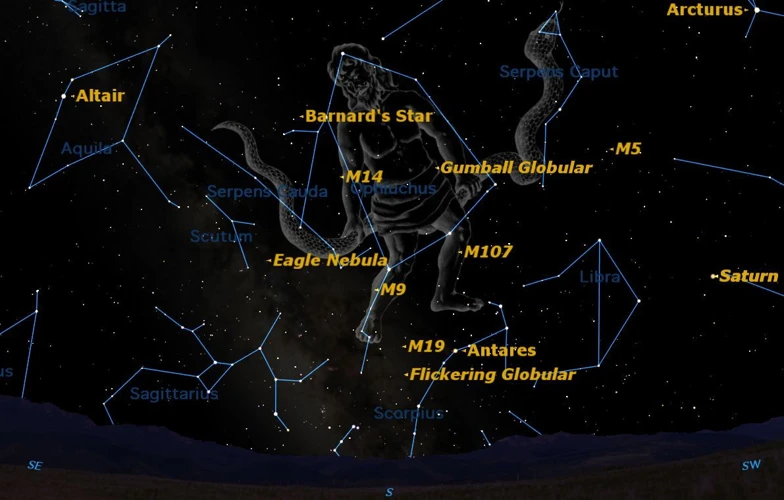
Scientific research and discoveries have played a crucial role in deepening our understanding of meteor showers and comets. Among these groundbreaking studies, the Stardust mission stands out. Launched by NASA in 1999, the mission aimed to collect and return samples of comet dust from Comet Wild 2. This allowed scientists to study the composition and origins of comets more comprehensively. Another notable mission was the Rosetta mission, launched in 2004 and managed by the European Space Agency (ESA). This mission successfully rendezvoused with Comet 67P/Churyumov-Gerasimenko and deployed a lander, Philae, to the comet’s surface, yielding valuable data about its composition and structure. NASA’s Origins, Spectral Interpretation, Resource Identification, Security, Regolith Explorer (OSIRIS-REx) mission, launched in 2016, focused on studying asteroid Bennu to gain insights into the early Solar System and the origins of life on Earth. These scientific endeavors have paved the way for remarkable discoveries, illuminating the intricate connection between meteor showers, comets, and the broader cosmos.
1. Stardust Mission
The Stardust mission, launched by NASA in 1999, aimed to collect samples from the coma of Comet Wild 2 and interstellar dust particles. This ambitious mission utilized a spacecraft equipped with a special collector called the “Comet and Interstellar Dust Analyzer” (CIDA). The CIDA not only captured dust particles from the comet but also analyzed their composition. In 2006, after traveling millions of miles, the Stardust spacecraft returned to Earth, bringing back samples of cometary dust. This marked the first time in history that pristine samples from a comet had been successfully brought back to our planet. The analysis of these samples provided valuable insights into the composition and makeup of comets, shedding light on the origin and evolution of our solar system. The Stardust mission expanded our understanding of cometary science and paved the way for future missions to explore and investigate these enigmatic celestial bodies.
2. Rosetta Mission
The Rosetta mission, launched by the European Space Agency (ESA) in 2004, was a groundbreaking mission aimed at studying the comet 67P/Churyumov-Gerasimenko. This ambitious undertaking involved a spacecraft that traveled alongside the comet for over a decade, providing valuable insights into the composition and behavior of comets. The mission’s main objective was to gather data about the comet’s nucleus, the solid core at the center of the comet. This was achieved by deploying a lander named Philae, which successfully touched down on the surface of the comet in 2014, becoming the first-ever spacecraft to accomplish such a feat. The data collected by Rosetta and Philae revolutionized our understanding of comets, revealing that they contain complex organic molecules and providing clues about the origin of water on Earth. Rosetta’s findings have significantly contributed to our knowledge of comets and have broadened our understanding of the early solar system.
3. NASA’s Origins, Spectral Interpretation, Resource Identification, Security, Regolith Explorer (OSIRIS-REx) Mission
The NASA’s Origins, Spectral Interpretation, Resource Identification, Security, Regolith Explorer (OSIRIS-REx) Mission is a remarkable endeavor aimed at gathering information about the asteroid Bennu. Launched in September 2016, this mission has provided scientists with a unique opportunity to learn more about asteroids and their connection to comets and meteor showers. The OSIRIS-REx spacecraft traveled to Bennu, a carbon-rich asteroid that is believed to be a remnant from the early solar system. One of the main goals of the mission is to collect a sample of Bennu’s regolith, which is the loose surface material covering the asteroid. The spacecraft approached Bennu in late 2018 and successfully touched down on its surface in October 2020, using a robotic arm to collect a sample of regolith. This sample will be brought back to Earth in 2023, providing scientists with valuable data about the composition and origins of asteroids. The OSIRIS-REx mission aims to enhance our understanding of the early solar system and shed light on the role of asteroids in the formation of meteor showers. It is a testament to NASA’s commitment to exploring outer space and unraveling the mysteries of our universe.
The Future of Meteor Showers and Comets
The future of meteor showers and comets holds exciting possibilities for scientists and astronomy enthusiasts. With advancements in technology and space exploration, our understanding of these cosmic phenomena continues to expand. One area of focus is the study of comet nuclei and their composition. Missions like the Rosetta mission, which successfully landed a probe on a comet, have provided valuable data about the composition and behaviors of these celestial bodies. Scientists hope to gain further insights into the origins of comets and their connection to the formation of our solar system. Additionally, ongoing research aims to improve our ability to predict and track meteor showers with greater accuracy. This will allow for better planning and observation of these spectacular events. As space exploration progresses, there may also be opportunities to study comets more closely and even intercept them to collect samples, further deepening our understanding of their composition and structure. The future also holds the potential for discovering new, undiscovered meteor showers and comets, offering exciting opportunities for scientific exploration and discovery. So, as we look to the future, we can anticipate a continued fascination with meteor showers and comets, as well as ongoing breakthroughs that will advance our knowledge of these captivating wonders of the universe.
Conclusion
In conclusion, meteor showers are captivating celestial events that have fascinated humanity for centuries. These stunning displays of shooting stars are closely tied to comets, as they occur when the Earth passes through debris left behind by these cosmic wanderers. The relationship between meteor showers and comets is a testament to the intricate workings of our solar system and the vastness of the universe. Through scientific research and missions, we have gained valuable insights into the origins and formations of meteor showers, as well as their connections to specific comets. From the famous Perseids and Leonids to the notable comets like Halley and Swift-Tuttle, meteor showers continue to enchant and inspire us. As we look to the future, advancements in technology and space exploration hold the promise of uncovering even more secrets about meteor showers and comets. Whether you are a casual observer or a dedicated astronomer, these celestial events serve as a reminder of the beauty and grandeur of our universe. So, the next time you find yourself gazing at the night sky during a meteor shower, take a moment to appreciate the intricate connection between these shooting stars and the comets that pass through our cosmic neighborhood. As we continue to explore and unravel the mysteries of the universe, meteor showers will undoubtedly remain an enduring source of wonder and inspiration.
Frequently Asked Questions
1. How often do meteor showers occur?
Meteor showers occur at different times throughout the year, with some showers happening annually and others more sporadically. The frequency of meteor showers depends on the specific comet or asteroid that created the debris trail.
2. Can you see meteor showers from anywhere on Earth?
Yes, meteor showers can be observed from various locations on Earth, as long as the sky is clear and there is minimal light pollution. However, the visibility and intensity of meteor showers may vary depending on your geographical location.
3. Are meteor showers dangerous?
No, meteor showers are not dangerous. The fragments that create meteor showers are relatively small and burn up in the Earth’s atmosphere before reaching the ground. They pose no threat to human safety.
4. How many meteors can be seen during a meteor shower?
The number of meteors visible during a meteor shower can vary significantly. Some showers may only produce a few meteors per hour, while others can generate hundreds or even thousands of meteors per hour during their peak activity.
5. How long do meteor showers last?
The duration of a meteor shower can also vary. Some showers last for just a few hours, while others span several nights. The peak activity, when the highest number of meteors can be observed, typically occurs over a specific period of time during the shower.
6. Can you predict when a meteor shower will occur?
Yes, astronomers have developed models and tools to predict when meteor showers will occur. These predictions are based on the orbit of the comet or asteroid that created the debris trail and historical observations of previous showers.
7. Are all shooting stars part of a meteor shower?
No, not all shooting stars are part of a meteor shower. Shooting stars, also known as sporadic meteors, can occur at any time and are unrelated to specific meteor showers.
8. How fast do meteors travel?
Meteors can travel at incredibly high speeds, typically ranging from 25,000 to 160,000 miles per hour (40,000 to 257,000 kilometers per hour) as they enter the Earth’s atmosphere.
9. How do meteor showers get their names?
Meteor showers are named after the constellation from which they appear to originate, known as the radiant point. For example, the Perseid meteor shower appears to radiate from the constellation Perseus.
10. Can you make a wish on a shooting star?
Making a wish on a shooting star is a popular superstition and tradition in many cultures. While it may not have any scientific significance, it is a fun and whimsical practice enjoyed by many during meteor showers.

